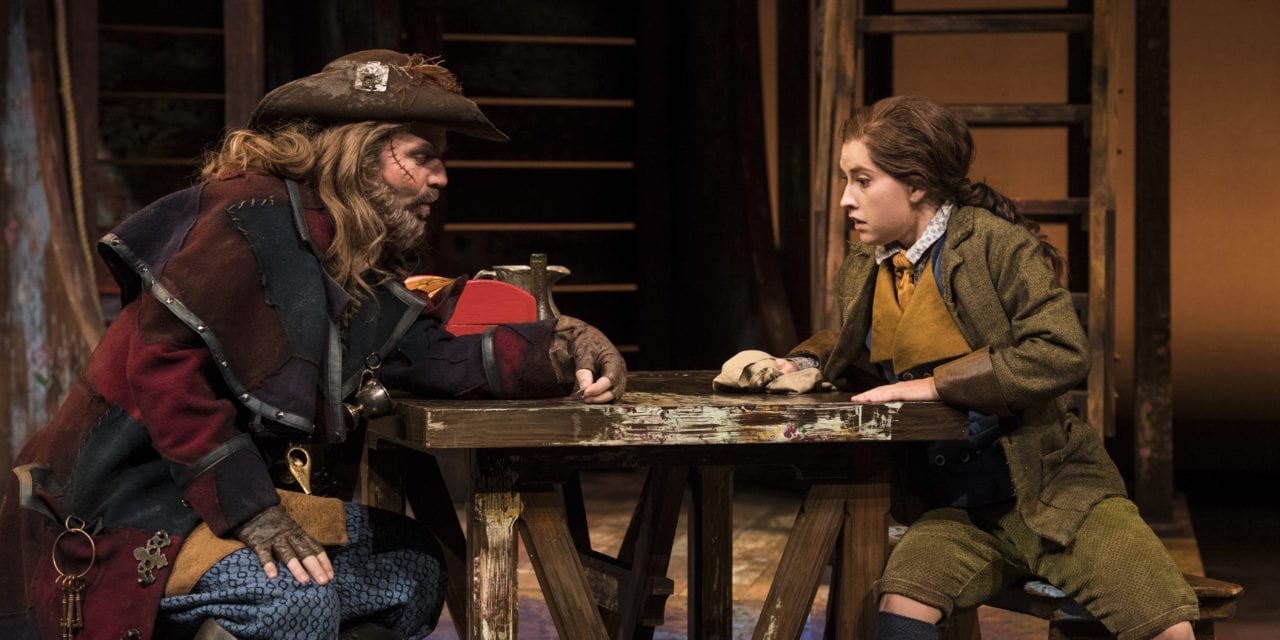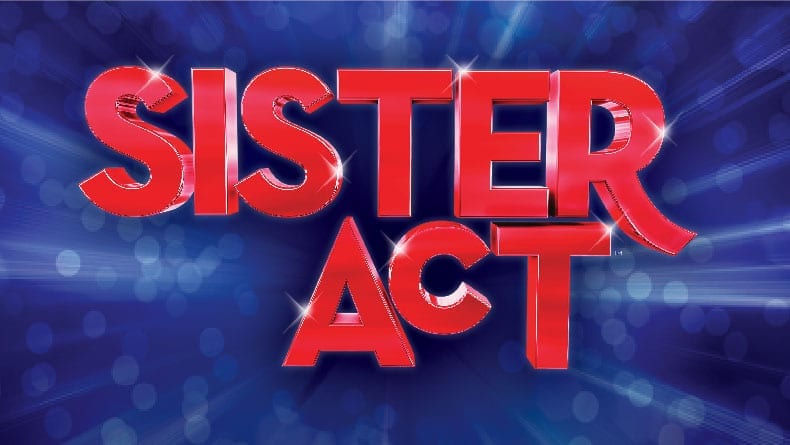CEDAR CITY — “There is no honor among thieves,” according to the old saying. This is certainly true of the pirates of Treasure Island, most of whom succumb to an early death as a consequence of greed, treachery, and betrayal. This classic story of high adventure is on stage now at the Utah Shakespeare Festival in an energetic swashbuckling production.

Show closes September 2, 2017.
Treasure Island is an adaptation by Mary Zimmerman of Robert Louis Stevenson‘s classic novel of the same name. The story recounts the adventures of Jim Hawkins, a young boy whose life is changed when a mysterious stranger named Billy Bones stays at his mother’s inn. When the man dies, Jim and his mother find in his box a treasure map. But a band of pirates led by the legendary Long John Silver know about the map and scheme to obtain it—and the treasure—from Jim.
Director Sean Graney excels at creating the ambiance of danger in most scenes, and early in the show it was apparent that Jim is in mortal peril in almost any location, whether it’s on the ship, the island, or in his mother’s inn. The gritty feel of each location contributed to the mood of the show, and I believe that young audience members will intuitively sense that Jim’s world is very different from their own. Graney was also effective in peppering the show with humor (mostly via the adept fish-out-of-water performance of Geoffrey Kent as Redruth), which provided variety to the show.

Geoffrey Kent (left) as Billy Bones and Sceri Sioux Ivers as Jim Hawkins. (Photo by Karl Hugh. Copyright Utah Shakespeare Festival 2017.)
The major drawback of Treasure Island, though, is the homogeneity of the actors’ performances. All of the pirates act and talk so similarly that I can’t state how many characters they were or the defining features of most of them. Even the iconic Long John Silver, played by Michael Elich, is only memorable because of his wooden leg. Almost any of the actors playing pirates could switch their roles, and it would hardly make any difference in the play. (How right Captain Smollett was when he said, “There’s not a lick of difference between them.”) The same can be said about the upper class characters: Dr. Livesey came closest to being a memorable character, thanks to Jonathan Haugen’s performance. But the other men (John Harrell as Constable Dance, Andrew May as Squire Trelawney, and Paul Michael Sandberg as Captain Smollett) all had the same paternal concern for Jim and the same foppish mannerisms.
Sceri Sioux Ivers stars as Jim, and she give the character a pep and curiosity that many young boys imagine in themselves. Her accent, which seems to have a touch of Cockney in it, is perfect, and the excitement she gives Jim in each scene betrayed the idealism of the character. Ivers, though, isn’t completely convincing as young teenager. She never displayed the rambunctiousness of a young teenager, and her voice sounds like a young woman’s, instead of the voice of a boy on the verge of puberty. The wig Ivers wore, with the long hair in a ponytail, also contributed to a feminine appearance (instead of long period hair, as was the intention). However, casting Ivers was probably the best option available; few teenage stage actors could have handled carrying the show on their shoulders as well as Ivers.

Michael Elich (left) as Long John Silver, J. Todd Adams as Ben Gunn, and Trent Dahlin as Abraham Grey. (Photo by Karl Hugh. Copyright Utah Shakespeare Festival 2017.)
Another memorable performance was from J. Todd Adams as the castaway Ben Gunn. His batty eccentricities (such as his love for cheese and scratchy, high pitched voice) and loneliness made him a sympathetic ally to Jim. Many actors would be tempted to ham up their performance in the role, but Adams wisely focused on Ben’s excitement to meet a person—a realistic reaction for a castaway. Finally, Latoya Cameron was the only speaking female member of the cast; her down-to-earth portrayal of Jim’s mother reminded me of other single mothers I know and how hard they work for their children. Plus, Cameron’s rendition of “Run, Jim, Run” was the best vocal performance in the show, and it augmented the excitement of the show as Jim tries to take the ship back from the pirates.
What Jim, Ben, and Jim’s mother have in common is that they’re the only characters that were fully unique in the play. I believe that if Zimmerman’s script had differentiated more among the characters, then the actors would have had been more successful in creating memorable performances. This adaptation is much more traditional than Zimmerman’s Metamorphoses and Argonautika; without the innovative theatricality that those scripts have, Treasure Island‘s poor character development is harder to ignore.
But most audience members won’t notice or care. Treasure Island is the Festival’s summer family show, and audience members young and old will just appreciate the athletic sword fights and classic story. Treasure Island has endured for over 130 years, and with an emphasis on action and an everyman protagonist, it is easy to see why.





